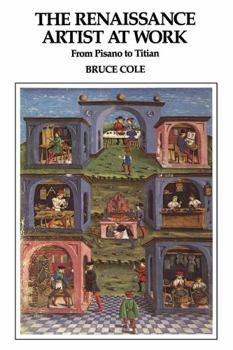The Renaissance Artist At Work: From Pisano To Titian
Select Format
Select Condition 
Book Overview
"This book gives the necessary background for the study and appreciation of Italian painting and sculpture from about 1250 to 1550. It tells how the artists learned their craft, the organization of the"
Format:Paperback
Language:English
ISBN:006430129X
ISBN13:9780064301299
Release Date:September 1990
Publisher:Routledge
Length:226 Pages
Weight:1.15 lbs.
Dimensions:0.6" x 6.2" x 9.0"
Customer Reviews
1 rating
interesting collection of essays
Published by Thriftbooks.com User , 22 years ago
Over the last 30 years there seems to be a greater interest on the part of art historians in the nuts and bolts issues of how art is created. The works of E.H. Gombrich come to mind, or "The Academy and French Painting in the Nineteenth Century", by Albert Boime. This rather disconnected set of essays by Cole examines the material issues facing the Renaissance artist.What did paintings cost? How was the artist valued? What expectations surrounded the conception and construction of the work of art? How did the original setting differ from our encounter with these works today? These are some of the questions addressed here. This is not a coffee table book, and the illustrations are low quality black and white (at least in the paper back edition). Like the other book by Cole that I have read, "Titian and Venetian Painting, 1450-1590", I wish this book was twice as long. Many of the questions touched on here are only given a brief answer, but the information that is here is fascinating. I am not an Art Historian, so I can only guess at the authors reputation (now head of the NEA). My sense is that he is one of those historians with a breadth of knowledge that is quite rare in these days of specialization, and that his viewpoint shows a high degree of originality. My only complaint (aside from the 100 or so color illustrations that could have provided more details) is that the writing style is not as graceful as some of the masters of this genre.






